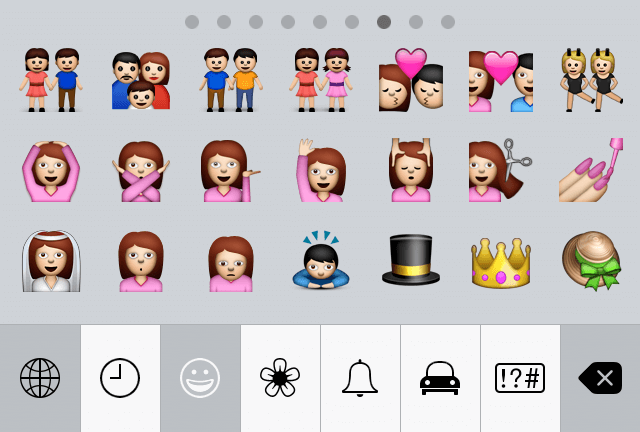Emojis, those word-substitute pictograms that live in text messages, are set to become more racially diverse.
The Unicode Consortium, a non-profit organization promoting software standardization has released a report detailing the introduction of new skin tone options. Until now, emojis have been locked into either a light or generic skin tone that represented a small portion of emoji users.
“People all over the world want to have emoji that reflect more human diversity, especially for skin tone,” the report says. “The Unicode emoji characters for people and body parts are meant to be generic, yet following the precedents set by the original Japanese carrier images, they are often shown with a light skin tone instead of a more generic (inhuman) appearance, such as a yellow/orange color or a silhouette.”
Emoji users will be able to add up to five new skin tones to certain characters using a font modifier. The limit is designed to prevent cluttering of the keyboard. Unicode will also be using skin tones from the Fitzpatrick scale, which is a standard for the study of skin tone.
In the case that emojis are being used in an application that doesn’t support the full skin-tone feature, the tone can be placed immediately after the character to show that it was intended to have that color. The colour appears as a square character that is separate to the emoji.
The word ‘Emoji’ comes from the Japanese 絵 (‘e’) meaning ‘picture’, 文 (‘mo’) meaning ‘writing’ and 字 (‘ji’) meaning ‘character’.
The skin tones and the feature in general are both still subject to change until Unicode 8.0 launches in June or July 2015.

